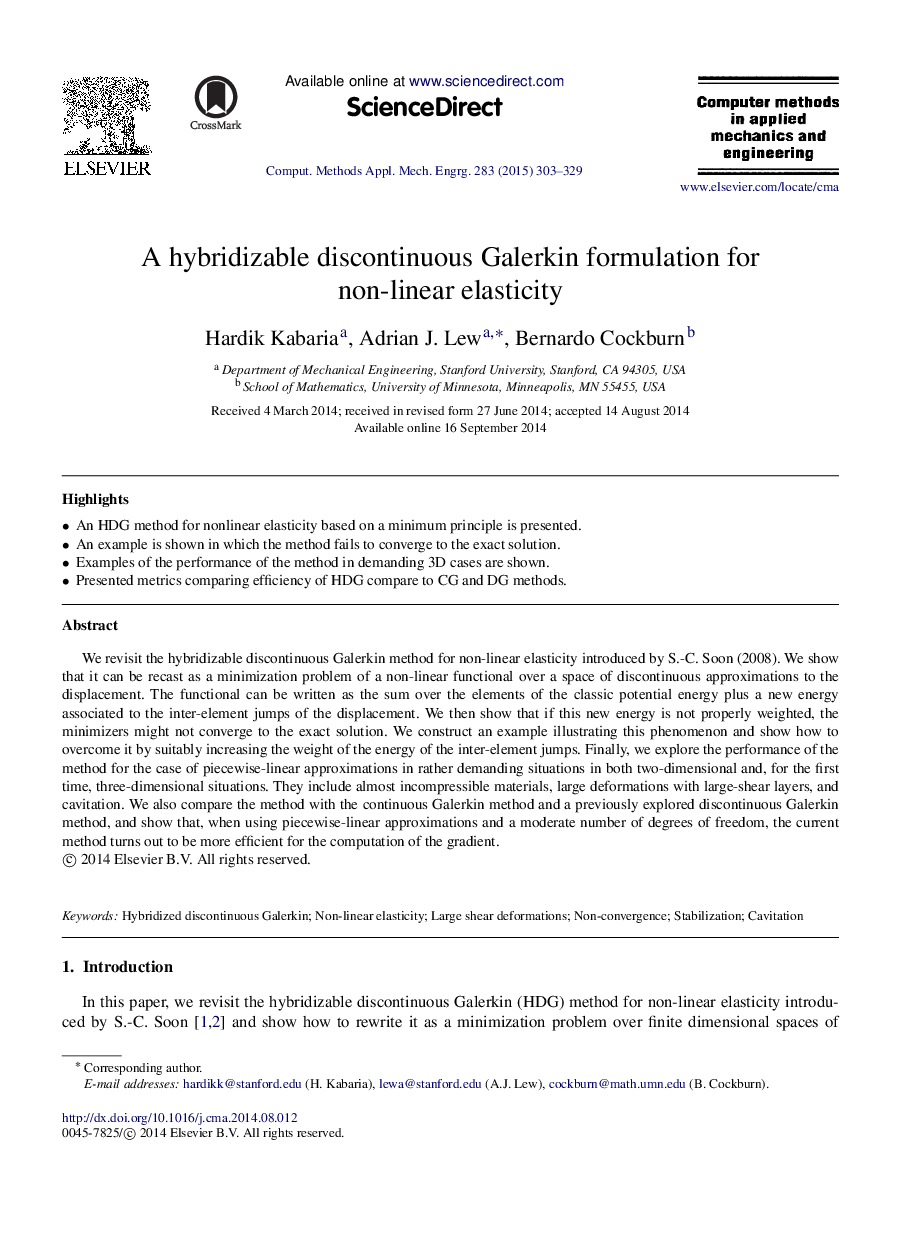| Article ID | Journal | Published Year | Pages | File Type |
|---|---|---|---|---|
| 6917143 | Computer Methods in Applied Mechanics and Engineering | 2015 | 27 Pages |
Abstract
We revisit the hybridizable discontinuous Galerkin method for non-linear elasticity introduced by S.-C. Soon (2008). We show that it can be recast as a minimization problem of a non-linear functional over a space of discontinuous approximations to the displacement. The functional can be written as the sum over the elements of the classic potential energy plus a new energy associated to the inter-element jumps of the displacement. We then show that if this new energy is not properly weighted, the minimizers might not converge to the exact solution. We construct an example illustrating this phenomenon and show how to overcome it by suitably increasing the weight of the energy of the inter-element jumps. Finally, we explore the performance of the method for the case of piecewise-linear approximations in rather demanding situations in both two-dimensional and, for the first time, three-dimensional situations. They include almost incompressible materials, large deformations with large-shear layers, and cavitation. We also compare the method with the continuous Galerkin method and a previously explored discontinuous Galerkin method, and show that, when using piecewise-linear approximations and a moderate number of degrees of freedom, the current method turns out to be more efficient for the computation of the gradient.
Related Topics
Physical Sciences and Engineering
Computer Science
Computer Science Applications
Authors
Hardik Kabaria, Adrian J. Lew, Bernardo Cockburn,
